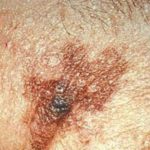1. Topical gene therapy beremagene geperpavec (B-VEC) was superior to placebo in achieving complete wound healing in patients with dystrophic epidermolysis bullosa (DEB).
2. Pruritus was the most common adverse event associated with B-VEC.
Evidence Rating Level: 1 (Excellent)
Study Rundown: DEB is a rare genetic skin disease caused by mutations in the COL7A1 gene, which encodes type VII collagen (C7), resulting in extensive and recurrent skin blistering. Long-term complications include an increased risk of squamous-cell carcinoma, infections, and limb deformities. No approved therapies exist for DEB. Gene-based therapies under investigation have been limited by safety concerns, the large size of the COL7A1 gene, and immune reaction to viral vectors. B-VEC is a topical gene therapy based on a replication-defective herpes simplex virus-1 carrying COLV7A1, which could circumvent these limitations. The current study was a phase three trial investigating the efficacy and safety of B-VEC in children and adults with DEB. B-VEC or placebo was administered to a treated wound and healing was compared to an untreated wound. At three and six-month follow-up visits, complete hound healing rates were significantly higher at wound sites treated with B-VEC. Patients in the B-VEC group also reported significant improvement in pain. Pruritis and chills were reported with both B-VEC and placebo. The limitations of this study were the small sample size and the predominance of smaller wounds, which have a shorter healing time. The study findings provide evidence of the efficacy of B-VEC as a corrective therapy for DEB.
Click here to read the study in NEJM
In-Depth [randomized controlled trial]: The current study was a phase three, double-blind, intra-patient randomized, placebo-controlled trial investigating the efficacy and safety of B-VEC in patients with DEB. Eligible patients were six months of age or older with symptomatic DEB confirmed by genetic testing. Exclusion criteria included participation in trials of B-VEC, concurrent immunotherapy, chemotherapy, or other investigational therapies. In a total of 31 patients, an investigator selected two open wounds of similar size, anatomical region, and appearance, and randomly assigned them 1:1 to be treated weekly with topical B-VEC or placebo for 26 weeks or until wound closure. Wound size and healing were assessed using the Canfield 2D/3D iOS imaging system. The primary endpoint was complete healing at six months. At six months, complete wound healing was observed in 67% of the wounds treated with B-VEC compared to 22% of those treated with placebo (difference, 46 percentage points; 95% Confidence Interval [CI], 24 to 68; p=0.002). Complete wound healing at three months was observed in 71% of the wounds treated with B-VEC, compared to 20% of those treated with placebo (difference, 51 percentage points; 95% CI, 29 to 73; p<0.001). At week 22, the mean change from baseline in pain severity was -0.88 with B-VEC and -0.71 with placebo (adjusted least-squares mean different, -0.61; 95% CI, -1.10 to -0.13), with differences persisting at weeks 24 and 26. Wound closure was also significantly more durable with B-VEC. Adverse events occurred in 58% of patients, the majority of which were mild or moderate and none resulted in treatment discontinuation. Squamous-cell carcinoma occurred in three patients at untreated wound sites. These findings provide evidence to support the use of B-VEC in treating DEB.
Image: PD
©2022 2 Minute Medicine, Inc. All rights reserved. No works may be reproduced without expressed written consent from 2 Minute Medicine, Inc. Inquire about licensing here. No article should be construed as medical advice and is not intended as such by the authors or by 2 Minute Medicine, Inc.


